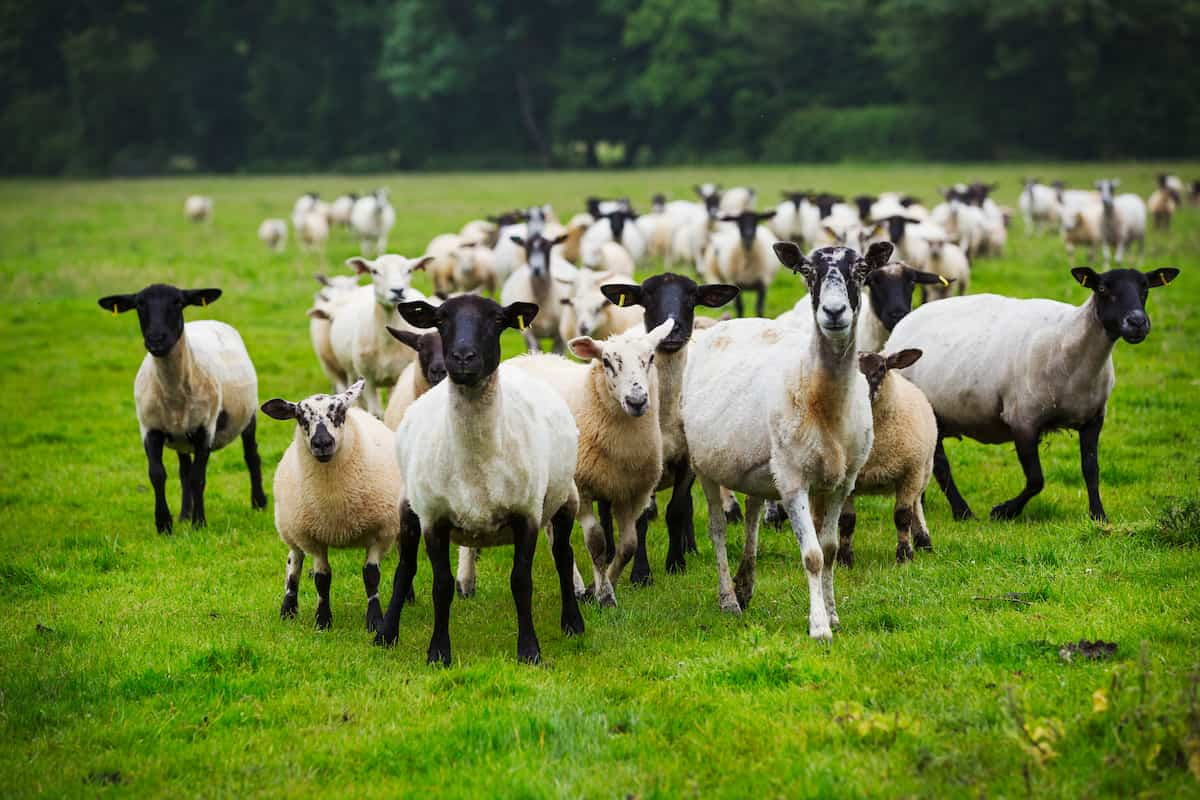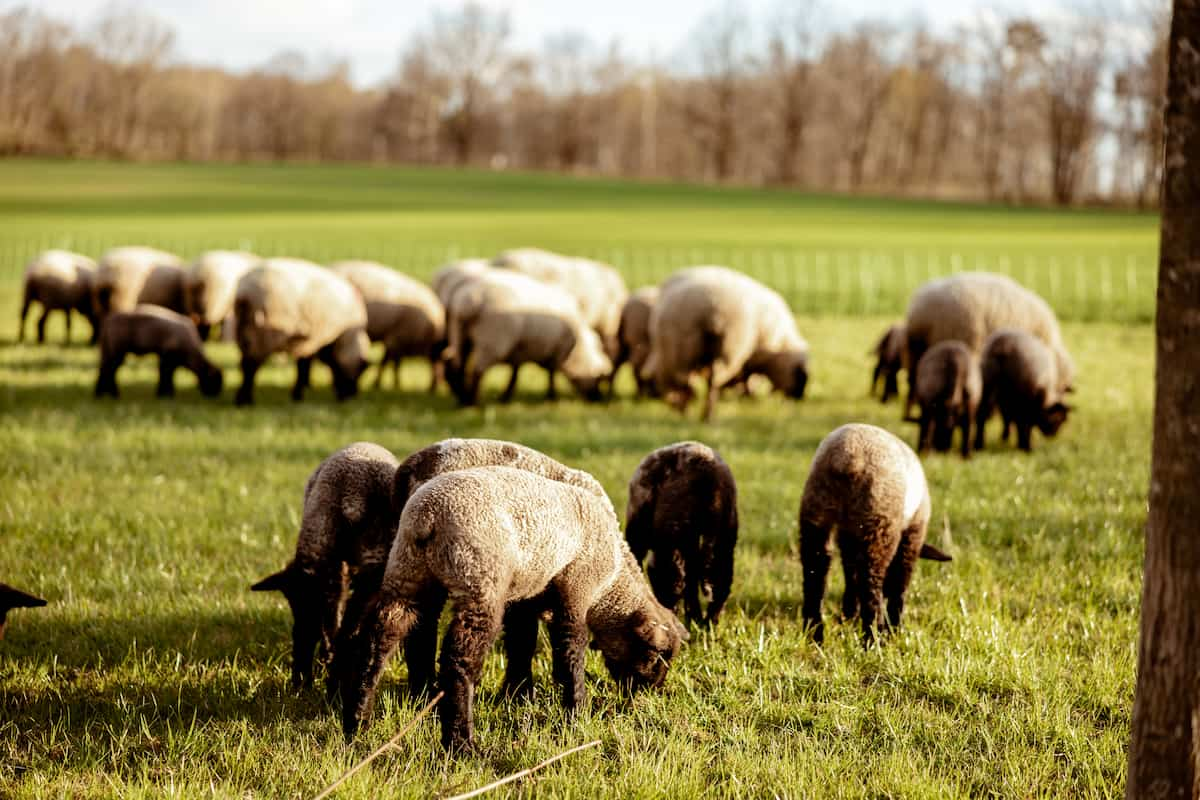Barbados’ indigenous Black Belly Sheep is considered one of the most desirable breeds. They are well adapted to the tropics, require little maintenance, and have a high reproductive rate. They are exported to the United States, Canada, Malaysia, and the Caribbean. Due to its low-fat content and delicate taste, it is favored as a food resource. Small farm plots and roaming sheep are the hallmarks of Black Belly Sheep farming in Barbados. They even cross-town streets and roadways to reach greener grasses.

Barbados Black Belly Sheep Facts
Facts About Barbados Black Belly Sheep Facts
- Adaptability: It is well-suited to grazing rough terrain and can survive on poor pastures. Additionally, they can tolerate hot and humid climates, making them ideal for tropical climates.
- Heat Tolerance: Climates with high humidity and heat are well suited to the breed. Barbados Blackbelly sheep have a short, fine coat that sheds naturally, keeping them cool in hot climates. Long, lean bodies with deep chests and narrow shoulders maximize heat dissipation and increase breed mobility.
- Grazing Ability: Barbados Blackbelly sheep can graze on rough terrain and live on poor pastures. As a result, they are ideal for farmers who do not have access to high-quality pastures.
- Horns: Both males and females of the Barbados Blackbelly sheep have long, curved horns. A flock’s horns are used to defend against predators and establish dominance.
- Unique Appearance: Barbados Blackbelly sheep are distinguished by their dark brown or blackheads, legs, and belly, with light tan body color. A distinctive feature of the breed is its red eyes.
- Longevity: There is a reputation for the longevity of Barbados Blackbelly sheep. Compared to other sheep breeds, this breed has a lifespan of 10 to 12 years.
Origin of Barbados Blackbelly Sheep
Barbados Blackbelly is a breed of hair sheep that evolved on Barbados island in the Caribbean. Since the mid-1600s, a cross between African hair sheep and European wooled breeds has been brought to the island. Currently, the breed is mainly raised for meat production. In addition, it is widely distributed in more than 25 countries worldwide, mainly in the Caribbean and South America. Most of the breed is found in the Caribbean region, Peru, and Mexico.
Barbados Blackbelly Sheep Physical Characteristics
- The Barbados Blackbelly sheep has a deep body and well-sprung ribs.
- Their coloration ranges from brown to tan to yellow. Generally, their faces are black or brown. Black is the color of their belly part, as the name suggests.
- They have black points on their nose and forehead, and their ears are also black inside. Rams have a thick neckpiece extending down the neck to the brisket; some may cover the shoulder.
- In Barbados Blackbelly sheep, the head is medium size and conforms well to the neck and body.
- The Rams are especially prone to having Roman noses. From the side, their ears should not droop and point forward. According to their body size, their necks are medium in length and slender.
- Generally, the Rams are heavier and well-set to the shoulder. In general, their legs are quite well set. Barbados Blackbelly sheep produce coarse hair instead of wool, making them a ‘hair sheep’ breed.
- An average mature ram weighs 45 to 59 kg, and an average mature ewe weighs 39 to 45 kg.
- Both rams and ewes are polled, and adults measure approximately 60 – 65 cm at the withers. The Barbados Blackbelly sheep is very prolific, usually producing one to four lambs per lambing, but litters of five or more are also common.
In case you missed it: Dorset Horn Sheep Facts: Origin, Physical Characteristics, Size, Pros, and Cons

Diet for Barbados Blackbelly sheep
The diet of Blackbelly is similar to that of a goat. Due to limited pastures in Barbados, the sheep that thrived were the ones that ate a diverse diet of weeds and woody browse, as well as grasses. Sheep can survive on land that is much more marginal than would be suitable for most sheep. Therefore, you can use them for weed control if you have a problem with well-managed pastures.
Barbados Sheep Pros
- There are many benefits associated with Barbados Blackbelly sheep. Barbados sheep are very resistant to internal parasites. It prevents parasites from attacking and residing in them. Due to their resistance to parasites, they do not get sick. Furthermore, they do not spread diseases.
- It is highly unlikely that they will become infected with any parasite. It is almost certain that these sheep will survive in almost every season.
- Barbados sheep are known for their high reproductive efficiency. Within one year, the sheep multiply quickly and double in number. In a short period, these sheep become mature. Sheep like them make good breeding stock.
- The prolificacy of these sheep is very good. These sheep are also outstanding mothers in addition to having good breeding abilities. Their young ones are taken care of very well by them. Keeping an eye on their children and protecting them from negativity is part of their job.
- It is considered to be an outstanding maternal breed. Additionally, it produces milk and meat, which is important commercially.
Barbados Sheep Cons
- Despite Barbados sheep’s benefits, it has more disadvantages. The carcass size of Barbados sheep is very small. Due to the small size of the carcass, Barbados sheep have a low commercial value.
- As a result of the small size of the carcass, Barbados sheep have a lower commercial value. Its carcass size is smaller than that of most other wool breeds. The larger the carcass size, the more important it will be commercially.
- Additionally, carcass quality has a high-fat content, which is another disadvantage. Barbados sheep have internal fat in their carcasses. It is considered to have a higher fat content than most wool breeds.
- There is a decline in the commercial value of carcass fat. Consequently, there isn’t much demand for Barbados sheep’s carcasses.
- As a result of the quality of their carcasses, these sheep are drawbacks. Sheep carcasses from Barbados have even lower muscle content than those from other wool breeds.
- In addition to its slow growth, Barbados sheep have another major disadvantage. During their initial phase of life, they reach puberty and begin breeding, but the overall growth of their bodies is slow.
In case you missed it: Hampshire Down Sheep Facts: Origin, Physical Characteristics, Size, Pros, and Cons

Conclusion
It is a breed of sheep that is gentle, docile, active, alert, and always alert. One of the best foragers, they love to manage foliage. The meat produced by these animals has a mild flavor and is said to be very tender. Their fleece is not really heavy but rather shorter and smoother. They are also very beautiful sheep. Since they can breed out of season, they are also prolific breeders that produce one or two lambs twice a year.
- Feed Your Flock for Less: Top 10 Tips to Save on Chicken Feed
- Ultimate Guide to Ossabaw Island Hog: Breeding, Raising, Diet, and Care
- Hatching Answers: The Top 10 Reasons Your Chickens Aren’t Laying Eggs
- Eggs and Economics: Breaking Down the Cost of Raising Backyard Chickens
- Defend Your Greens: Proven Methods to Keep Iguanas Out of Your Garden
- Ultimate Guide to Cinnamon Queen Chicken: A Comprehensive Guide for Beginners
- Ultimate Guide to California Tan Chicken: Breeding, Raising, Diet, Egg-Production and Care
- Ultimate Guide to Marsh Daisy Chicken: Breeding, Raising, Diet, and Care
- 10 Types of Chicken Farming Businesses You Can Start for Profits
thanks for info